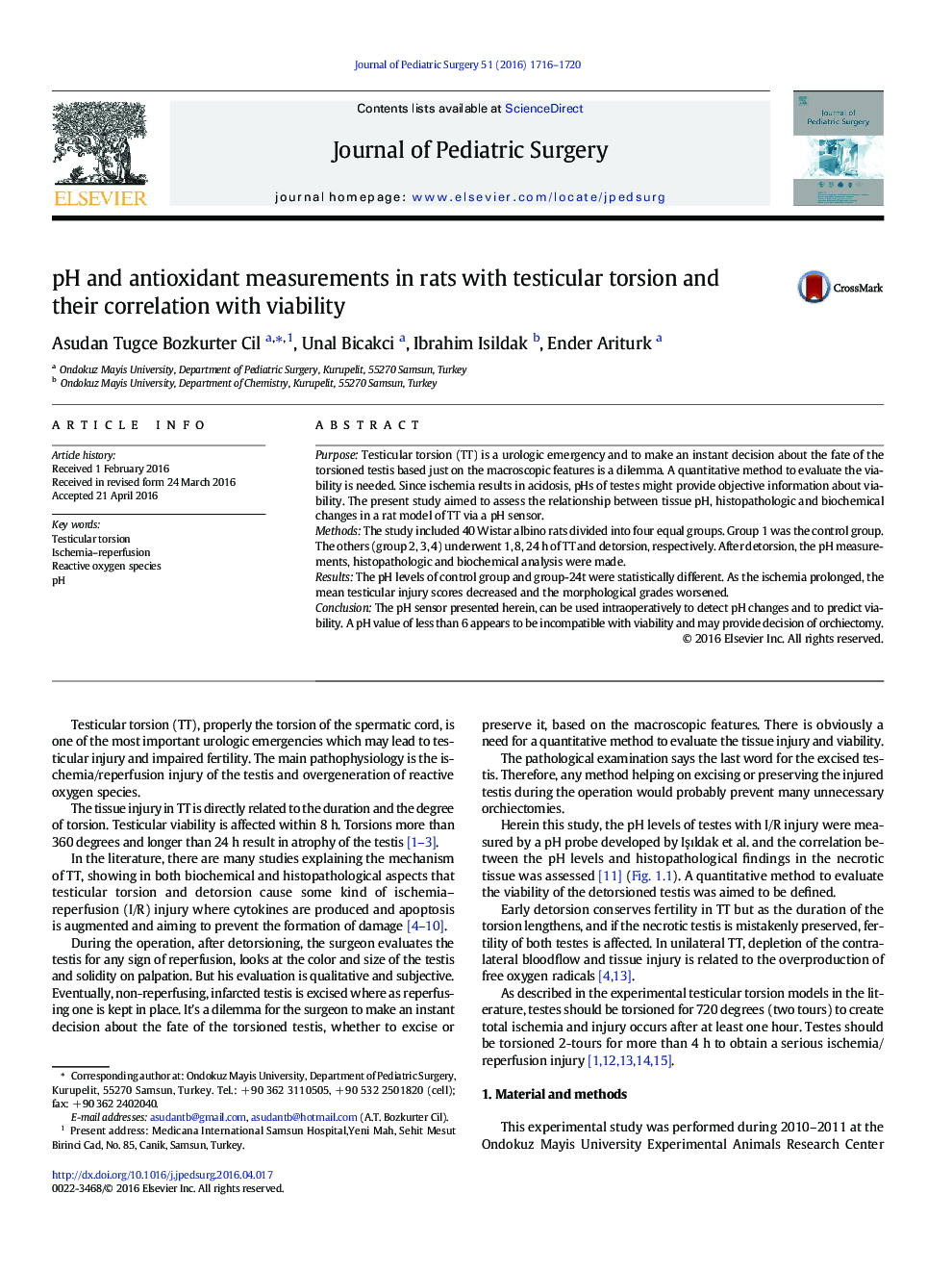| Article ID | Journal | Published Year | Pages | File Type |
|---|---|---|---|---|
| 4154687 | Journal of Pediatric Surgery | 2016 | 5 Pages |
PurposeTesticular torsion (TT) is a urologic emergency and to make an instant decision about the fate of the torsioned testis based just on the macroscopic features is a dilemma. A quantitative method to evaluate the viability is needed. Since ischemia results in acidosis, pHs of testes might provide objective information about viability. The present study aimed to assess the relationship between tissue pH, histopathologic and biochemical changes in a rat model of TT via a pH sensor.MethodsThe study included 40 Wistar albino rats divided into four equal groups. Group 1 was the control group. The others (group 2, 3, 4) underwent 1, 8, 24 h of TT and detorsion, respectively. After detorsion, the pH measurements, histopathologic and biochemical analysis were made.ResultsThe pH levels of control group and group-24t were statistically different. As the ischemia prolonged, the mean testicular injury scores decreased and the morphological grades worsened.ConclusionThe pH sensor presented herein, can be used intraoperatively to detect pH changes and to predict viability. A pH value of less than 6 appears to be incompatible with viability and may provide decision of orchiectomy.
